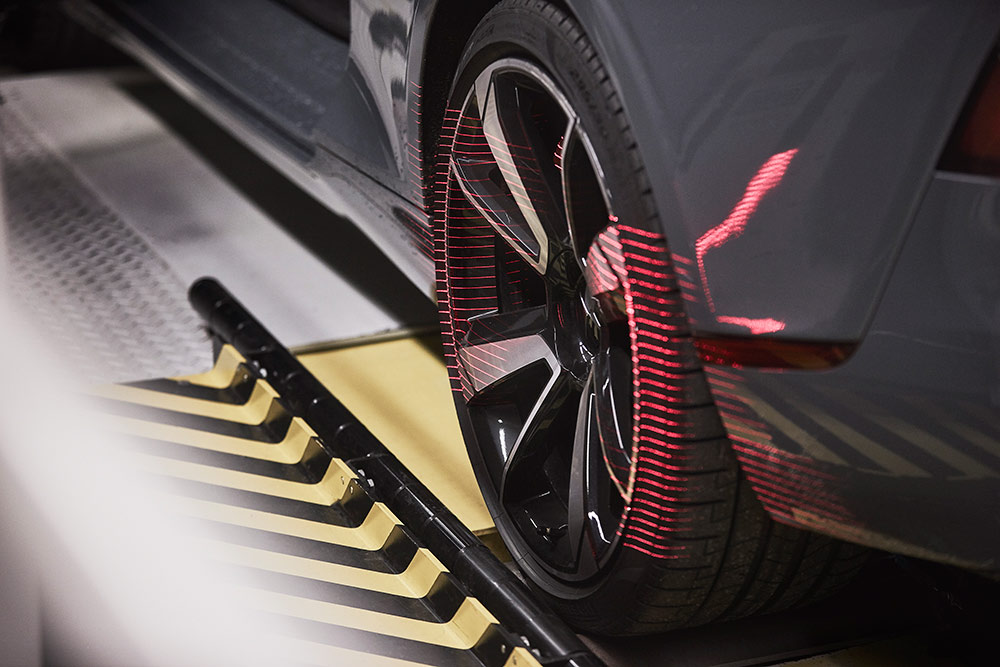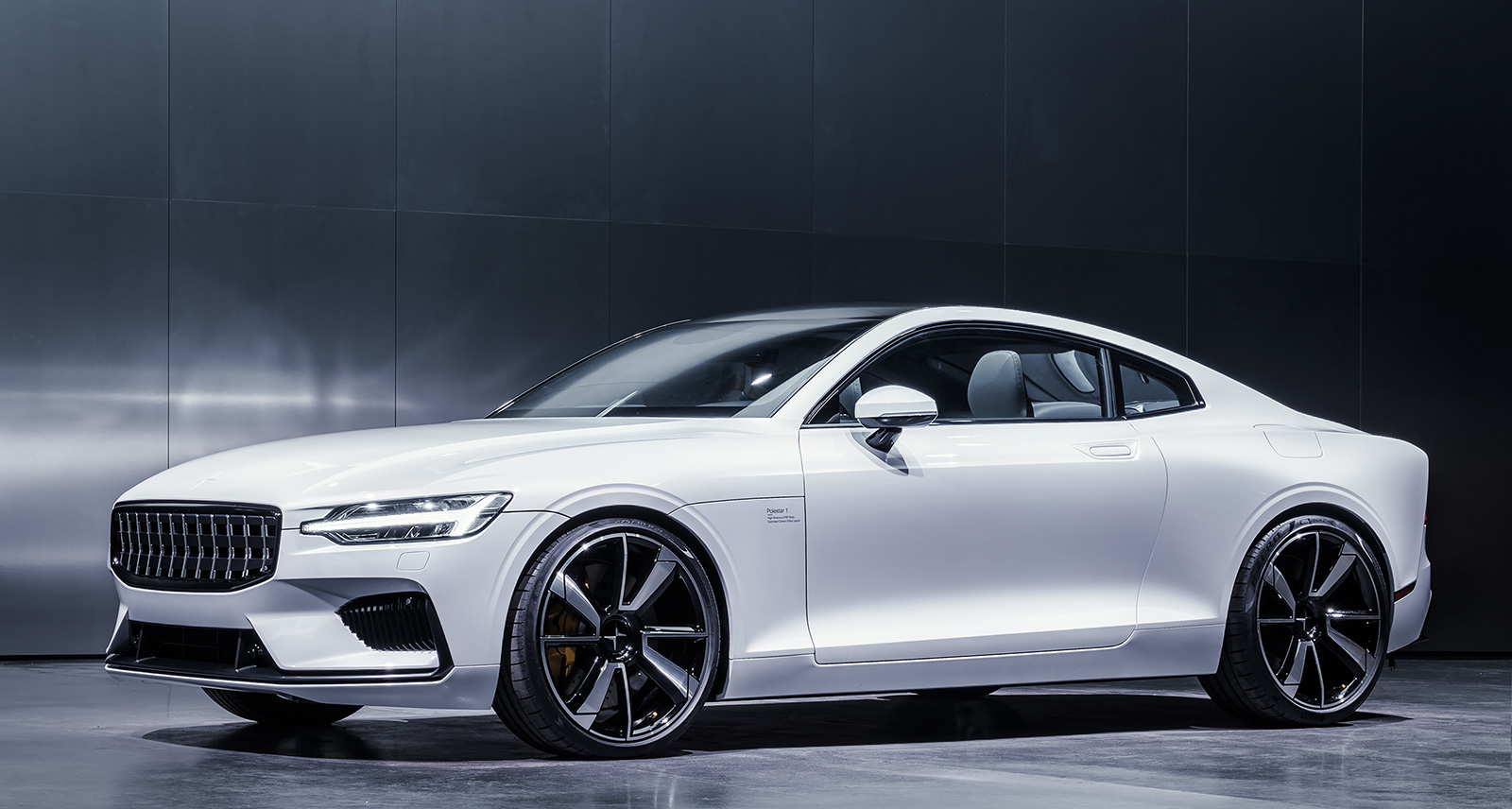The Polestar 1 Is Finally Real. And It’s Spectacular.
This isn’t our first rodeo. We’ve been around long enough to have heard the siren song of many a new car company. They sing a pretty tune of revolution, innovation, disruption. They make grand, boastful claims. They make a big splash at an auto show with a stunning concept car and then…crickets. Just as quickly as they appear, they vanish, often leaving behind only a large flaming pile of venture capital as evidence of their ambition.
Polestar is different. In 2017, the company announced itself to the world at an especially slick event in Shanghai. It made a big splash, promising a range of sleek, Scandinavian-designed, Chinese-built, zero-emission vehicles.
The new company was the brainchild of Thomas Ingenlath, chief designer at Volvo, where he was responsible for cars including the beautiful V90 station wagon and XC40 SUV. Ingenlath has since taken the CEO position at Polestar, a separate company owned 50–50 by Volvo and the Chinese automaking juggernaut Geely. It’s this strong financial backing (around $736 million USD in initial investment), combined with Ingenlath’s and Volvo’s tried-and-true experience making world-class automobiles, that has allowed the company to get its first car to market while so many others have failed.

That the Polestar 1, the brand’s first car, exists at all is an achievement. Whether or not it’s any good is what we came to the redwood forests of the Pacific Northwest to find out.
The low-slung coupe gives off a distinct tech-wear vibe that suits the Silicon Valley setting. A little block of text behind the front wheels reads, “Polestar 1: High Modulus CFRP Body; Optimized Carbon Fibre Layout.”
Like a Virgil Abloh sneaker, it proudly displays its underlying construction. Look inside the trunk and you’ll see a glass panel housing a neat array of heavy-duty orange cables that carry the car’s electric power. On the glass, the cables are labelled according to their function: “ERAD R,” “BATTERY 3,” “CIDD.” Underneath, it says “Polestar 1: 3×96; P34 Cells LGC.” It has nothing to hide. Every detail is considered. It is a display worthy of a modern art museum, or NASA. We’ve never seen anything like this in a car.
In case it wasn’t obvious from those cables, the Polestar 1 is electrified. As a first product from a new company, it’s wildly ambitious: a $200,000 plug-in hybrid grand-touring coupe the likes of which the world has never seen.
Two electric motors powered by a medium-sized lithium-ion battery pack (hidden primarily in the transmission tunnel, between the seats) are responsible for spinning the rear wheels. A cutting-edge 2.0-litre turbo- and supercharged four-cylinder motor under the hood spins the front wheels. Combined, they give the Polestar all-wheel drive capability and supercar-level power — 619 horsepower and 738 lb-ft of torque — not to mention relatively low carbon-dioxide output.
The roads that twist through the forests of towering redwoods are often extremely narrow. There are no straight sections. It’s all turns, most of which are blind, so you can’t see an oncoming vehicle until it’s right in front of you. Experience dictates this is the worst sort of road for an extremely heavy and powerful car. It’d be like paddling a concrete canoe down a waterslide.
The Polestar 1 clings to the serpentine road with a reassuring tenacity. The front wheels track true through every bend. You can place the car on the road with millimetre precision. The control offered by two rear electric motors are what allow this car to handle in ways no other sports car ever could. The Polestar 1 has an otherworldly ability to whip around corners. A glance down at the speedometer indicates you’re going 30 per cent faster than you imagined.
It’s slightly unnerving at first, but then you give in and begin to simply enjoy the experience.

Its acceleration is equally mysterious. The electrically assisted thrust arrives in a violent rush, all at once. It’s not like any four-cylinder we’ve ever sampled. One moment, the car is pussyfooting around, feeling docile. Then you prod the throttle and it takes off like a frightened cat (albeit a cat that actually weighs as much as a fully grown white rhinoceros). Despite its carbon body structure, the Polestar 1 tips the scales at a hefty 2,350 kilograms. Like all electric cars, it’s heavy. Unlike all electric cars, it doesn’t really feel like it.
The extremely stiff body, suspended on exotic Öhlins dampers, provides good feedback to the driver about what’s going on at the wheels. The official 0–100 km/h time of 4.2 seconds doesn’t do justice to the wall of power that’s always available in this car.
What makes the Polestar 1 truly groundbreaking, though, is that it offers this kind of performance while also being reasonably eco-friendly. With an electric-only driving range of around 80–100 km, most people could complete their daily commute without burning a drop of gasoline. Then, when you want to take a quick trip down the Pacific coast, it’s ready to go with a combined gas and electric range of 870 km. We’d wager it’s more than up to a track day as well, provided there’s an EV charger handy. It’s devilishly complex under the hood, but would be supremely easy to live with.
Not since the original Tesla Model S have we driven a car that has so opened our eyes to new possibilities. High-performance and long-range capability in one fuel-sipping car. On top of that, the Polestar 1 is stylish in a way that no other car on the road today can match; it’s effortlessly cool and we want one in our driveway.










